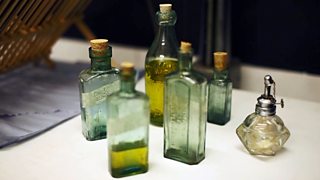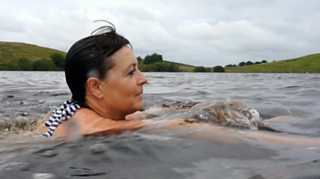The award-winning photographer shunning digital technology in order to produce evocative, Victorian-inspired photographs
18 May 2018
Advances in digital technology over the last decade .
They’re more affordable than ever and their ability to produce professional-quality images has delivered a big boost to photography’s popularity.
David Gillanders is who has spurned this modern technology in favour of a focus on techniques popular in the 1800s. The haunting images he produces evoke the style of a bygone era.

Alchemy And Art | Into It
This is how they developed photographs in the 1800s!
“I felt connected to the history”
It was a love of boxing that first sparked David’s passion for photography.
Tired of being punched in the face, the then-13 year old picked up a camera and started taking black-and-white portrait photographs of the people in the gyms and clubs in which he used to train.
Years later, a friend gave David a small, black glass ambrotype photograph — a small, beautiful object with whose history he instantly connected.

A ‘crazy’ process
David had no knowledge of how create ambrotypes, so he searched online to learn about the equipment he’d require and the production technique: .
Several stages in the process involve chemicals – some of which are considered dangerous – so there is plenty of potential for images to turn out poorly. David cherishes those that turn out well: “You’re left with a beautiful, hand-varnished, hand-made photographic image that will last for over 100 years.”
He explains that the process of wet collodian photography has taken over his life and describes the unique and powerful images he helps create as “alchemy and art, combined”.
The wet collodion process
A wet photographic emulsion is applied onto glass or black metal and then exposed to light.
Before the wet emulsion dries, the photograph needs to be developed, fixed and varnished in order to make the image permanent.

David said he needs to be respectful of the chemistry that was used for the collodian process back in the 1800s, due to some of the chemicals being potentially harmful — such as the potassium cyanide used as a fixer.


Latest features from ���˿��� Scotland
-
![]()
'Wild swimming helps me process the grief of losing my son'
The benefits of cold water therapy.
-
![]()
Winter adventures are appealing, but an expert advises caution
Trips in winter require particular knowledge and skills.
-
![]()
The rescuers: Why volunteers risk their lives in mountain emergencies
Landward meets members of the Cairngorm Mountain Rescue Team.
-
![]()
‘Look for the light’ – practical tips to help you through another winter with SAD
Useful advice and tips to combat low moods at this time of year.
-
![]()
How you could be a binge drinker without even knowing
Binge drinking is classed as fewer units than many people may realise.
-
![]()
How chocolate biscuits and drama classes helped one man leave prison behind
The healing power of creativity.
-
![]()
'When people believe in you, it’s life-changing'
Author Graeme Armstrong revisits the man who helped turn his life around.
-
![]()
The 'breath-taking' display of US birds swept on to British soil
Recent storms have brought rare birds to our shores.
-
![]()
Six things we learned about Alan Cumming on Take the Floor (Spoiler: includes accordions)
The actor spoke to Take the Floor's Gary Innes.
-
![]()
How street gangs trap young men in a dangerous cycle of violence
The almost inescapable pull of life in a gang.
-
![]()
Why stylist Gok Wan believes there's no such thing as bad fashion
The fashion expert says we should stop following rules and do what feels right.
-
![]()
Is sending a CV still the right way to apply for a job?
They've been central to job applications for years, but are they worth it?



















